It wasn’t the children building sandcastles next to naked sunbathers at Maspalomas Beach on Grand Canary Island. I didn’t think twice about the rainbow flags demarcating a section of the beach. The covered and visible breasts, bellies, and thighs didn’t turn my head. The naked sunbathers―dark chocolate from their hairline to the tips of their toes―shocked me.
Every morning of our four-days at Maspalomas Beach, Fabio and I, along with hundreds of other sun lovers, strolled along the sand. This beach is one of the most popular among the seven Canary islands. We were two of about four million tourists a year, primarily from Spain, England, Italy, France, Poland, and Germany who had traveled to this island paradise, ninety-three miles off the coast of northwest Africa. This volcanic island boasts the best weather and beaches of the nearby islands. UNESCO has declared 50 percent of Grand Canary a Biosphere Reserve. In 2023, sixteen million visitors to all the Canary islands enjoyed the shores, food, drink, and dunes.
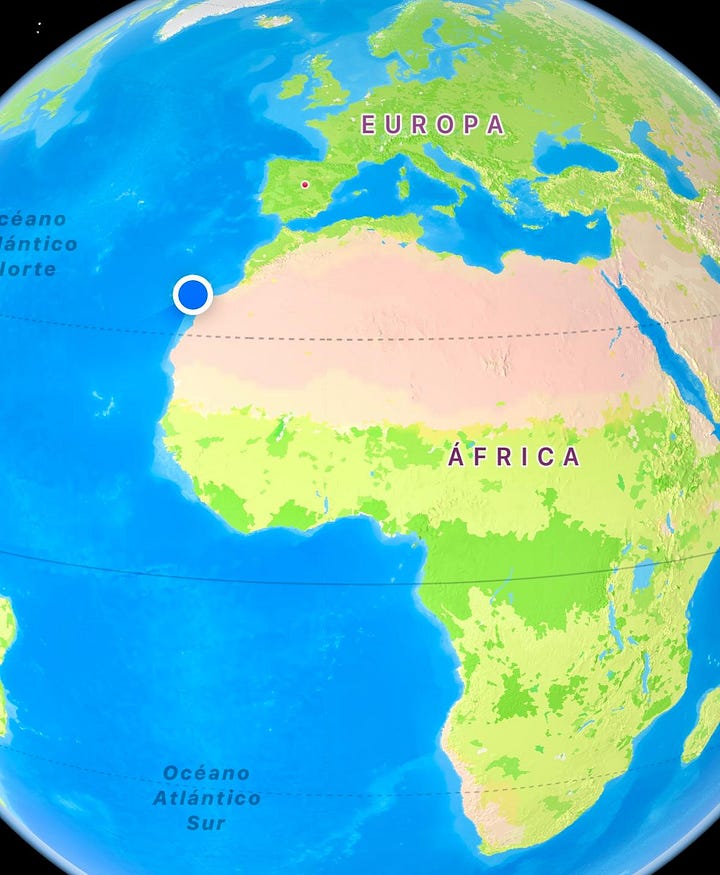
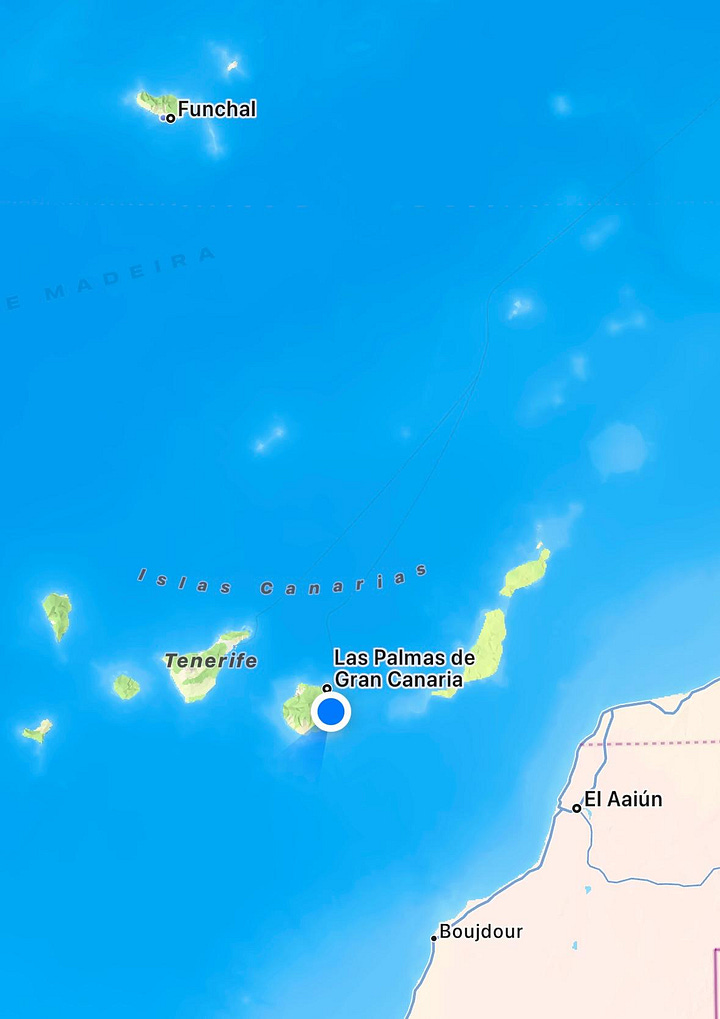
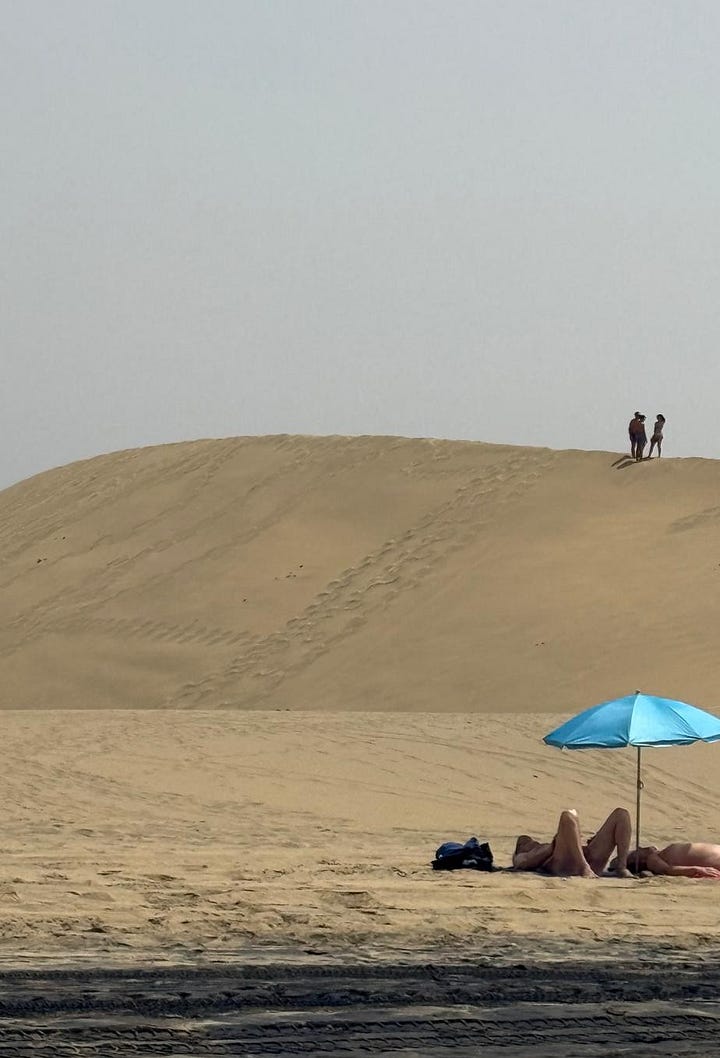
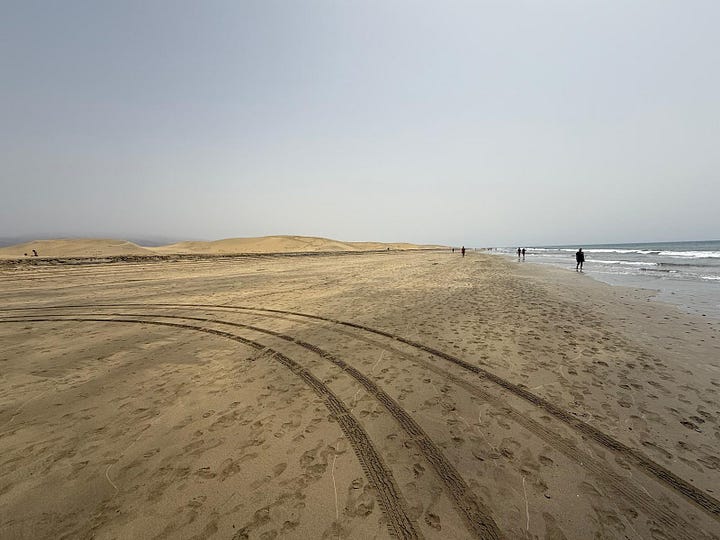
We vowed to climb the dunes that reached eighty-two feet in height, the equivalent of a five to seven story building. We sauntered down the beach, walking through distinct sections: the part closest to the snack bars, ice cream and souvenir shops, and kiosks selling water adventures where families pitched their tents or umbrellas; the gay section marked off by rainbow flags fifteen minutes farther down; and finally, the part for naturalistas, nudists.
By the time we arrived at the base of the dunes, the sun had sapped our strength. We admired those tiny people standing at the top. We let the water lap our feet.
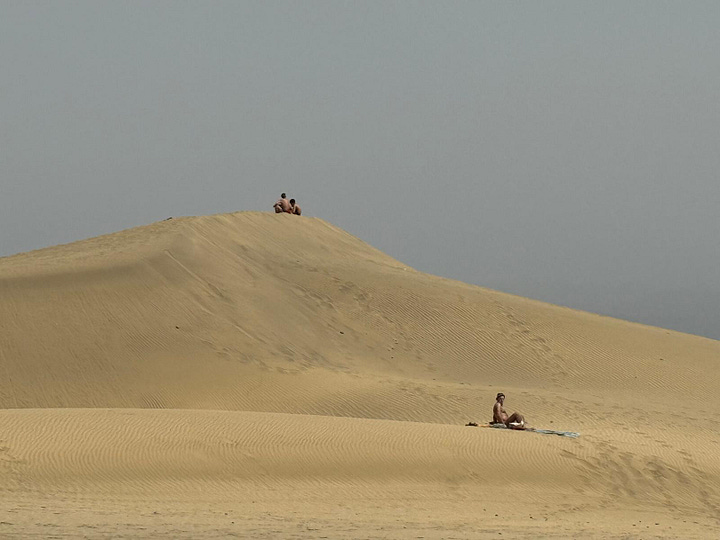
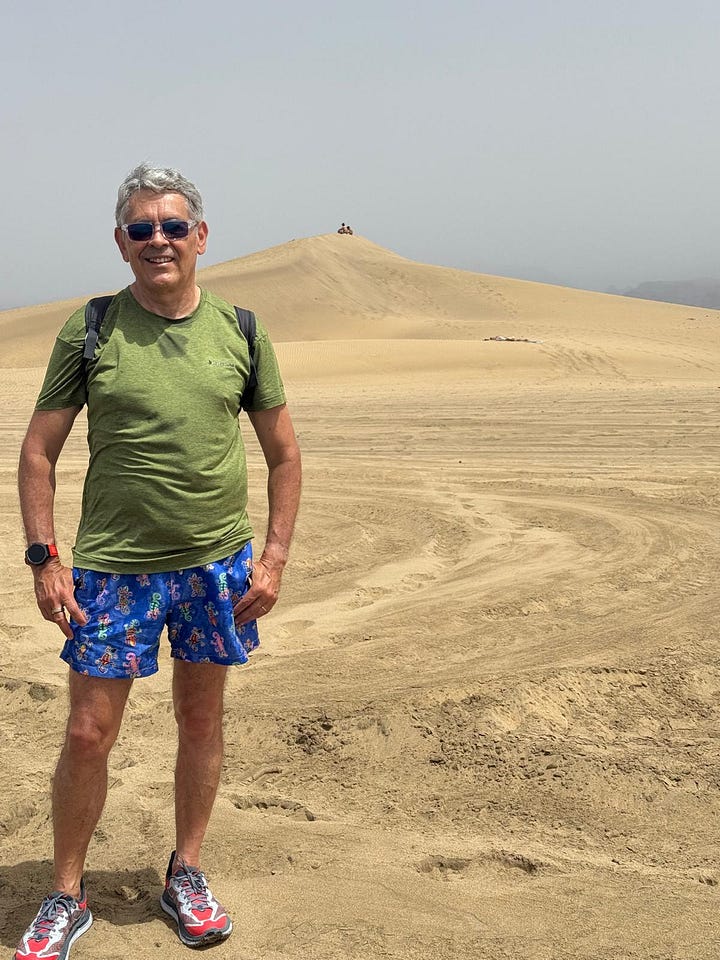
Like the naturalistas, the island’s first population, the Berbers (Imazighen), who came from the Sahara 2,500 years ago, worshipped the sun. They also revered the moon and towering rocks. They enjoyed a peaceful life there until 1483 when the troops of Spain’s Queen Isabella conquered the island and imprisoned the island’s queen, after a five-year battle. In 1492, Christopher Columbus dropped anchor there on his first venture to discover the New World. During the Spanish Inquisition, Jewish converts made up many of the migrants from the mainland.
Fabio and I, also enjoying the sun and the cool water swirling around our feet, ambled by people of all ages and body types, wearing skimpy bathing suits or none at all. The beachgoers who had flung themselves onto the sand without any umbrella, tent, or shade brought us to a halt. On our return an hour later, they’d still be there. We found them in the same position the following day.
The Spanish government, dermatologists, and pharmacologists have done a thorough job helping people understand the relationship between skin cancer and the sun. Skin cancer in Spain is the most common form of the disease. Oncologists say 95 percent of skin cancers are due to exposure to the sun. A study conducted among French, Belgians, and Germans who moved to sunny Mediterranean climes were 2.7 times more likely to contract the disease, and 4.7 times more if they toasted themselves.
While people know the health risks and buy sunscreen―its sale in Spain has increased by 20 percent since 2023―evidence suggests some sunbathers believe that medical advice to slather on the stuff is conspiratorial. A well-known Spanish fútbol player Marcos Llorente told his 2.3 million Instagram followers that if they thought that the sun caused skin cancer, then they were kings of ignorance. Brazilian model and influencer Gisele Bündchen claimed that she didn’t use sunscreen because of its poisonous chemicals. In fact, she didn’t apply any synthetic products to her skin, only creams from a line of natural products she had just launched.
TikTok and other social media sites play a role in spreading disinformation and conspiracy theories about sun protection. A study by the University of Minnesota and Pennsylvania State University demonstrated that video misinformation heightened beliefs in sunscreen myths and reduced acceptance of facts about it and intentions to use it.
Influencers’ comments resonate with an increasing number of sun worshippers who spread incorrect information about protecting oneself from UV rays. They argue that sunscreen:
· Produces a deficiency of Vitamin D because the cream blocks the sun’s rays entering pores.
· Contains harmful chemicals absorbed into the skin.
· Produces cancer.
· Takes too long to develop, causing the industry to charge higher prices.
Experts at Madrid’s College of Pharmacology reiterate that tanning damages the skin. It’s a defense mechanism that protects skin from radiation. They assure the public that limiting exposure to the sun and eating a healthy diet provide sufficient Vitamin D.
The coffee-colored sunbathers basking in misinformation and conspiracies while endangering their health furrowed my brow. I rushed back to the hotel to smear on anti-wrinkle, anti-aging cream.




Great post, Andrea! I understand the English, Irish, Welsh and Scots are among the most fair, and most likely to develop skin cancer, yet today it is 35 degrees here, and I see hundreds of white-bread-coloured people from the isles out there in their tiny tops and bottoms (which, by the way, they would never wear at home, as they are much too revealing). I am inside with a fan blowing, drinking fresh mint tea, because that is what my Moroccan friends tell me is the right thing to do. It is HOT. But the baby pink skin is out there, and even if wildly successful in developing a modest tan after their outer layers of skin burn off, come winter and old age - should they live that long - these same people will look like contour maps of the Himalayas! But why??
Sunscreen every day, all year, is important and necessary.
Good grief. As one who burns if I merely glance at the sun, everything about the desire to behave like a rotisserie chicken while on the beach is baffling.